Becoming a dog owner is one of the greatest joys in many people’s lives. These furry creatures are quick to become valued members of the family and providing them with the best care is often a major priority. For those looking to bring a dog into their lives, the question of cost is a big one.
The total annual cost of owning a dog in Canada can vary pretty significantly depending on breed and age, but generally will range between $1,000 - $4,000 per year. There are many different components that contribute to total costs, and different owners will spend more or less depending on what they deem as necessities.
In this article, we will break down the top 9 costs associated with owning a dog that new owners will likely be spending on, including everything from dog food and accessories to routine veterinary care.
- Neutering a Dog
- Dog Food and Dog Treats
- Dog Beds
- Leashes and Collars
- Dog Grooming
- Routine Veterinary Care
- Dog Training Classes
- Dog Walking
- Pet Boarding
Keep reading to learn more about how much you’ll be spending on your new furry family member.
Neutering a Dog
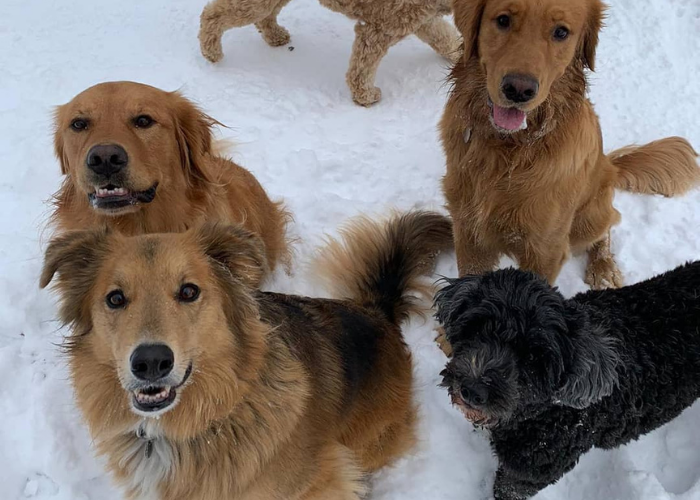
Neutering (or spaying, for a female) is a necessary operation for any dog owners who do not plan on breeding their animal professionally. If you are adopting a dog from a shelter or humane society, there is a good chance the dog will be required to be neutered before they can be brought home.
The Canadian Veterinary Medical Association (CVMA) strongly recommends that all dogs not intended for breeding be “neutered before sexual maturity.” The CVMA further states:
“Neutering prior to sexual maturity reduces the incidence of reproductive hormone dependent diseases, reduces surgical complication rates, and shortens recovery and healing times”
There are a few different factors that can affect the cost of neutering including the dog’s sex and age. The cost will also vary depending on where and when the dog undergoes the surgery.
Neuter vs. Spay
Depending on the sex of the dog, the neutering operation will be different – and so will the cost.
Though neutering is sometimes used as an umbrella term for both operations, it actually refers to the male operation. The female version is called spaying.
Spaying is a more invasive surgery, and as such, requires more resources and veterinary expertise. On the other hand, neutering tends to be a less intensive surgery. This ultimately means that spaying will generally be more expensive than neutering.
In general, an average neuter or spay appointment will cost between $50 to $250, though this price range can still vary a good bit depending on the dog’s age, weight, and overall health status.
For example, check out the SPCA and Humane Society’s cost chart for dog neutering to get a good idea of how prices can range according to different factors.
Age of Neutering
The ideal age to spay or neuter a dog is around 6 months of age. In ideal circumstances, a shelter, breeder, or owner will have the animal in their possession at this age to ensure they get the proper procedure at the right point in their puppyhood.
However, not every dog get neutered as a puppy. Different circumstances can result in different neutering statuses, and some dogs may end up getting the operation later in life.
There is no true maximum age for spaying and neutering, although the surgery can become more difficult or invasive the older the animal gets.
Additionally, certain health conditions may prevent an animal from being able to undergo the operation safely. Always consult with a veterinarian before going through with any surgical procedures for your dog.
Adoption Costs
In some cases, the spay or neuter costs may be covered with the initial purchase price. The cost to adopt or buy a dog will differ depending on the source. For instance, a small dog shelter may have low-cost adoptions that cover spay and neuter costs in order to make room for new animals.
Comparatively, a high-end breeder may have initial adoption costs upwards of $1,000 or more.
Generally, if you are adopting a dog from a reputable shelter or breeder, the neuter and spay surgery should ideally be completed and included in adoption fees. This ensures the animals is all set to join a new family without too many excess appointments or complications at the start.
Additionally, some shelters or breeders may choose to hold the animal for a period of time after the surgery to ensure no health complications arise.
Dog Food and Dog Treats

When making a budget as part of a dog ownership plan, a significant portion has to be dedicated to food and treats.
A nutritious and well-balanced diet is an essential component for taking the best care of a dog, so choosing high quality foods over much cheaper but more questionable options is highly recommended.
Dog food and treats are easily the number one source of owner spending.
In 2020, Canadians spent an average of $1,083 on dog food alone – and that’s not even counting treats.
More than $350 million was spent on meal and kibbled dog food, making it the most commonly purchased type of food available on the market. A good cost range to expect from dog food will be between $1,000 - $1,500 annually.
There are several factors that can impact how much you will be spending on dog food, and understanding those factors is necessary for creating a realistic budget that allots enough monthly and annual funds for dog food.
Quality of Food and Treats
Higher quality food and treats are inherently going to be more expensive than lower quality foods that place less emphases on wholesome ingredients and balanced nutrition.
Though some people choose to go all out and purchase the most expensive brands, there is a sweet spot in the middle range of costs of healthy and cost-efficient foods.
When choosing a dog food, the key step is to look closely at the ingredients. High quality dog food should include at minimum the freshness of the ingredients used, the source of the ingredients, and any antibiotics or supplements that may be included in the recipe. New dog food that has been recently added to your dog's diet can cause digestive issues. Digestive issues such as gas and diarrehea can often times be resolved with a good dog probiotic.
It is also important to not be fooled by diet fads, such as grain-free food. Grains are a healthy part of a dog’s diet and dog’s rarely experience grain allergies. Additionally, evidence has pointed to grain-free food actually causing health problems in some canines.
Always consult with a veterinarian if you are unsure of the safety or quality of the food you are serving your animal.
Breed Requirements
The amount you spend on food will be extremely dependent on the breed and size of your dog.
Larger dogs are naturally going to need more food per meal and will thus consume much larger quantities of dog food over the course of a month or year.
In most cases, the dog food that you purchase will include information and nutritional charts to help you determine the proper amount of food to be serving your pet.
Following the feeding recommendations given by a food brand is key to making sure your dog does not gain or lose any weight unnecessarily.
Additionally, highly active dogs will likely need a heftier diet to keep up with the calories and energy they burn from running around.
Special Diet
Certain breeds of dogs may be more vulnerable to health conditions that affect what they are able to eat. Sensitive stomachs is an issue that is particularly prevalent in smaller breeds, such as Chihuahuas.
Being mindful of your dog’s behavior after eating is important for keeping an eye for potential health issues. Some symptoms to watch out for that indicate your dog may be having issues with their food include:
- Excessive scratching or licking
- Dry or irritated skin around the mouth
- Bloated stomach
- Diarrhea or constipation
- Food avoidance or reluctance to eat
- Vomiting
If any of these symptoms do appear, it is best to also schedule an appointment with your veterinarian to ensure there isn’t a more serious underlying health issues. Plus, a vet will be able to better determine which types of foods and ingredients will work best for your dog’s breed.
Be wary of feeding dogs table scraps, as seasonings and cooking methods that use fat and grease can be hard on your pet’s stomach and potentially cause them to gain unwanted weight.
Dog Beds
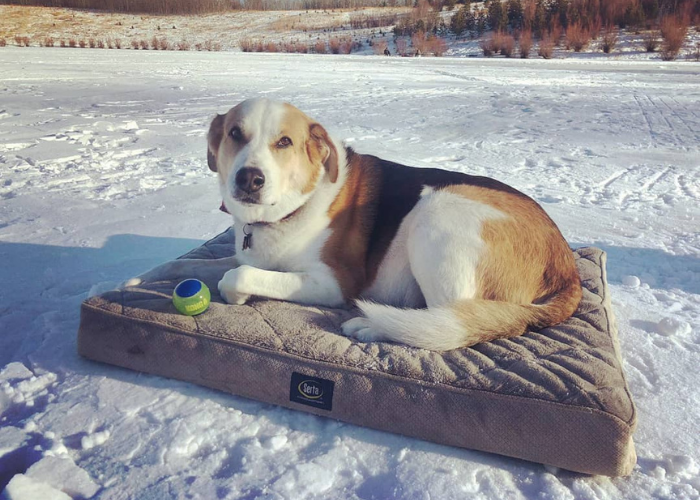
Dog beds are an important dog accessory, especially for dogs who are new to a household and are not yet assimilated to their new environment or people. A bed that is specifically for your dog provides them with a space that is their own that can provide them with a sense of comfort and stability.
Generally dog beds will range between $50- $300, although this price will scale with size and quality of material. Check out this great 2020 review of dog beds to see what kinds of price options you will be looking at.
Luckily, if you choose the right kind of bed, it can be a long-term investment that can last you for years.
Dog beds are more of an initial “start-up” cost rather than a recurring annual one. As such, it can be worthwhile to make a bigger investment on a bed that will be durable against natural doggy wear and tear.
Dog Size
Obviously, a larger dog is going to need a larger bed, which requires more material to make. Thus, larger dog beds will be greater in cost. This is an important consideration to keep in mind when selecting a bed, as you may be buying for a puppy that will eventually grow in size.
Buying a smaller bed for a puppy may be appealing, especially when trying to get a dog to adapt to its new environment and begin to feel comfortable.
The key is to buy a bed that is slightly larger than they need so that it can suit them for several months while you assess how big they are actually going to get, at which point you can buy a replacement bed for when they are fully-grown.
Material
Dogs can experience allergies just like humans can, and fabrics and other materials can end up triggering those allergies in some dogs. Considering the material that a dog bed is made from is important, as your dog may end up having sensitive skin or be negatively affected by the material being used.
According to PetMD, the filling of a dog bed may cause an allergic reaction or skin sensitivity within your dog. Thus, it is crucial to know what the bed is made from so you know to avoid that material again in the future.
If your dog does turn out to have sensitive skin or allergies that are irritated further by bedding materials, try finding alternatives such as hypoallergenic beds.
Additionally, choosing a bed that has a removable and washable outer layer will help to not only prevent build-up of potential allergens or skin irritants, but elongate the lifespan of the bed as well.
Crates
Though crate training is likely to be a component of any owner’s initial dog training routine, some owners may choose to keep a crate readily available for their dogs to stay or sleep in while the owner is away.
For those who regularly use crates, it is important that your dog does not view the crate as a punishment and feels comfortable staying in the crate for extended periods of time.
Adding a bed to a crate is a good way to make the dog feel more at home and less anxious about entering the crate. Thus, when purchasing a bed it can be highly beneficial to choose a product that can fit inside the dimensions of a crate.
Leashes and Collars
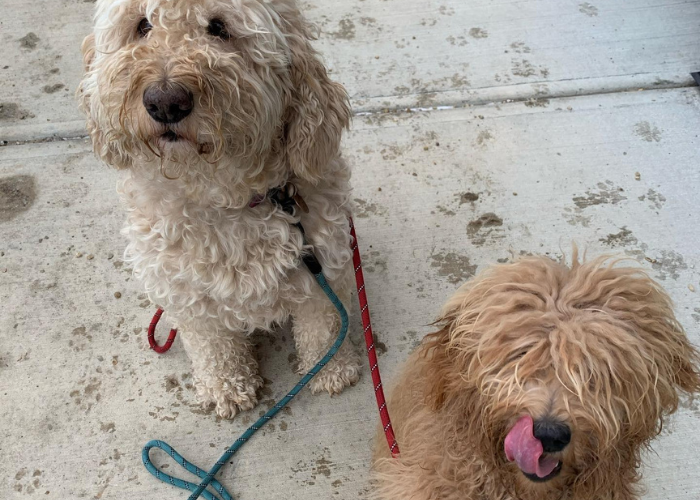
Leashes and collars are necessary accessories that help to train, control, and identify your pet.
The amount you spend on a leash and collar is ultimately up to your own personal preference, as even cheaper products will likely do the job well. Naturally, there are more specialty kinds of each that can be purchased that are likely to increase the overall costs of these goods.
On average, you can probably expect to spend between $25 - $100 on a quality leash and collar set. When purchasing custom or specialty leashes and collars, that range may increase towards the $300 - $400 range.
Types of Leashes
While choosing different leashes comes down mainly to aesthetics, certain types of leashes can be useful in specific scenarios, such as walking larger and more powerful dogs.
Here is a quick rundown of some of the most commonly used types of leashes:
- Standard Flat Leads: This is your run-of-the-mill leash. It can vary in length, color, and pattern and will generally be sold in different sizes to work for different size dogs.
- Flexible Leashes: Some leash designs incorporate flexible rope or bungee cord materials. This leash can make pulling less intensive and give your dog some extra wiggle room.
- Easy/Gentle Leads: These types of leashes may come with either a built in or attachable face harness that puts the power of the leash beneath the face rather than around the neck. These can help immensely when training a dog not to pull excessively or to behave on a leash.
- Hands-Free Leashes: Hands-free leashes typically attach around the waist of the owner, allowing for them to keep their dog leashed while also keeping their hands free. These are great for super active owners who take their dogs hiking or to parks often.
Types of Collars
Like with leashes, there are different kinds of collars that can be used for different purposes.
Collars are an essential accessory because your dog’s rabies tags, and other proof of vaccinations can be attached and displayed.
Additionally, tags with the dog’s name and owner contact information can be attached in the even the dog ever gets lost.
- Flat Collar: The standard collar that lays flat against the fur. These collars can be made from a variety of materials in all sizes.
- Head Collar: Head collars are generally used alongside easy or gentle leads. They attach around the dog’s head and helps to keep a dog’s attention in one direction and prevent pulling.
- Harnesses: Harnesses are an alternative to collars that attach around the chest and body rather than around the neck. Harnesses can be especially useful for service dogs to help indicate that they are working.
Dog Grooming
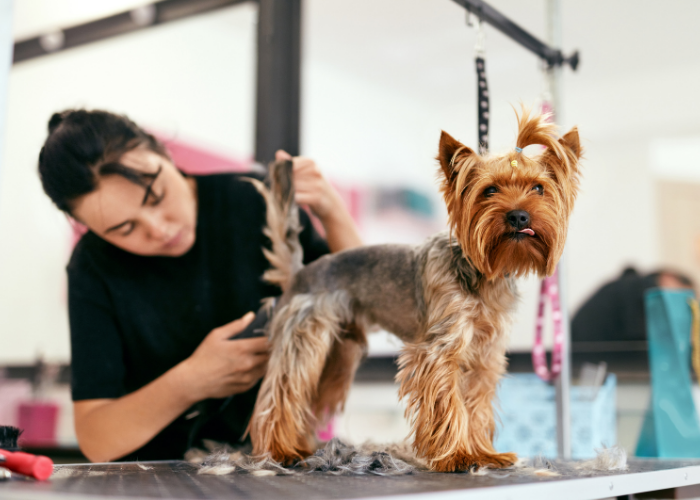
As any dog owner knows, fur becomes a part of your daily life when you welcome a dog into your home.
Keeping a dog’s fur and other physical attributes well-groomed is necessary not just for your dog’s health and well-being, but for the cleanliness of your home as well. Depending on the intensity and frequency of the grooming you provide for your dog, the annual costs can range from as low as $20 to upwards of $500 per year.
Here is a list of the basic grooming that should be done on a regular basis:
- Brushing excess or undercoat fur away
- Trimming nails
- Trimming back long fur from eyes and ears
- Dental cleanings
While basic grooming care is generally considered necessary, there are also customs types of grooming that can be performed for aesthetic purposes according to an owner’s desires, such as cutting and styling fur to have a specific appearance.
Signs of Fur Troubles
Certain types of fur are more difficult to groom and maintain than others. Different breeds will have different coat types and knowing which type your dog has is key to knowing what grooming services you will need.
Here are a few examples of symptoms that indicate there is an issue with your dog’s current fur grooming routine:
- Brittle or Dry Coat: Brittle and dry coats can be indicative of not just grooming issues, but of nutritional issues as well. In terms of grooming, make sure dog fur-friendly products are being used and the dog is being brushed often to help remove dead hair.
- Greasiness: Greasiness is often a sign of inconsistent or irregular bathing. If your dog’s coat is greasy, considering upping the frequency of bath time.
- Color Change: Color change can result from fur going a prolonged period without grooming, trimming, or washing. This is especially true for lighter colored dogs where discolorations are more apparent.
- Excessive Tufts: Dogs with undercoats will begin to have tufts of excessive and loose fur sticking out overtime. This is solved through a professional removing of the undercoat fur.
Dental Care
VCA Hospitals estimates that over two-thirds of dogs three years of age or older have experienced periodontal disease to some degree. As such, dental cleanings are a necessity for ensuring your dog’s overall health, as dental disease can greatly impact all other factors of a dog’s health status.
Dental cleanings will vary in terms of how frequently they must be done depending on how clean a dog’s teeth stay naturally. Dogs who are avid chewers of tough materials, such as Kong toys or bones, are likely to have cleaner teeth.
Doggie dental cleanings will range in cost depending on the severity of the tartar and plaque build-up and can cost anywhere from $150 - $900. Having your vet check up on your dog’s teeth at regular visits is a good way to stay ahead of the dental cleaning curve.
Routine Veterinary Care
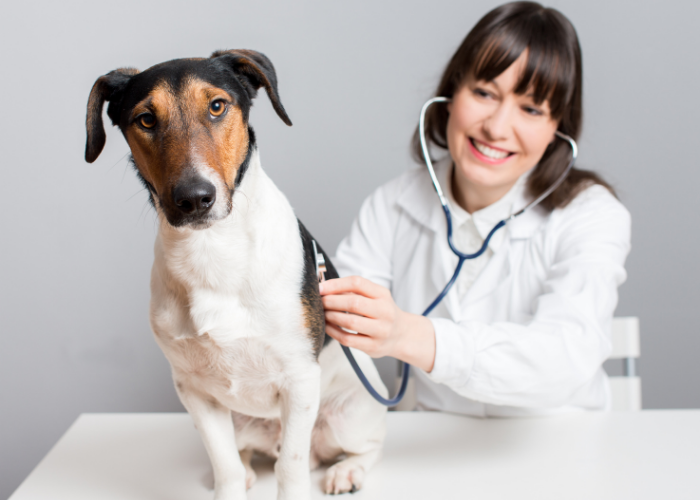
Anytime you adopt an animal, it is crucial to get set up with a veterinarian that you will visit for regular and routine care as soon as possible.
There are many ins and outs to the health of a canine, and a veterinarian will be the best source of information and resources regarding how to care for your animal. According to Rover, a routine vet visit and the related procedures will range between $80 - $150, though there are additional cost considerations which we will cover below:
Monthly Preventative Medicines
There are two main monthly preventative medicines that owners must keep a stock of: flea and tick prevention, and heartworm prevention.
Flea and tick prevention is majorly important and protects your dog from skin infections caused by fleas or other mites, as well as protecting from diseases, such as Lyme’s Disease, which is commonly spread by ticks.
Most major brands, such as Frontline or NexGard, range at about $15 - $20 per month, though most can only be bought in three-month supplies.
Heartworm prevention’s main purpose is to kill heartworms in the early stages before they can become harmful to your dog. According to Alberta Animal Health Source:
“Heartworm occurs in warmer regions, where summer temperatures are high enough for the worm larvae to survive inside the carrier mosquitoes. The high-risk areas in Canada are southern Ontario, southern Quebec Manitoba, and the Okanagan in British Columbia. Heartworm is also found in most states in the US.”
Providing your dog with heartworm prevention is simple and only costs around $10 - $15 per month. Not using heartworm preventatives can result in a dog contracting heartworms - a treatment that costs a whopping $400 - $1000, as well as putting your animal’s life at significant risk.
Vaccinations
There are several annual or recurring vaccinations that a dog should receive.
According to the CVMA, the core vaccinations for dogs are canine distemper, infectious canine hepatitis, canine parvovirus, and rabies.
The CVMA further states:
“Current protocols provide for vaccines to be given every three years for distemper, parvovirus and infectious canine hepatitis, with many of these vaccines now carrying a three-year effectiveness label. Rabies can also be given every three years where allowed by law.”
As such, these vaccinations may not even need to be an annual cost in most cases.
Vaccinations are generally given together in these core sets, and cost on average between $75 - $100. Additional costs can be gathered if an owner chooses to give their dog non-core/non-essential vaccinations as well.
Check out the CVMA vaccination page to learn more about what vaccinations your dog needs and what purposes they serve.
Emergency Care
It is inevitable that at some point you will have to bring your dog to the emergency vet.
Maybe they ate something they shouldn’t have, maybe they broke a bone – point is, emergency vet visits need to be considered within your pet budget. If you’re lucky, your emergency vet bill will only be a couple hundred.
In most cases, however, emergency vet bills can range in the thousands. This is because emergency veterinarian supplies are more expensive and intensive to use, thus making treatment more costly.
To best prevent having to visit an emergency vet, keep a close eye on your dog’s health, activities, and what they are munching on in their free time. No one wants to drop a few thousand over an eaten sock!
Dog Training Classes
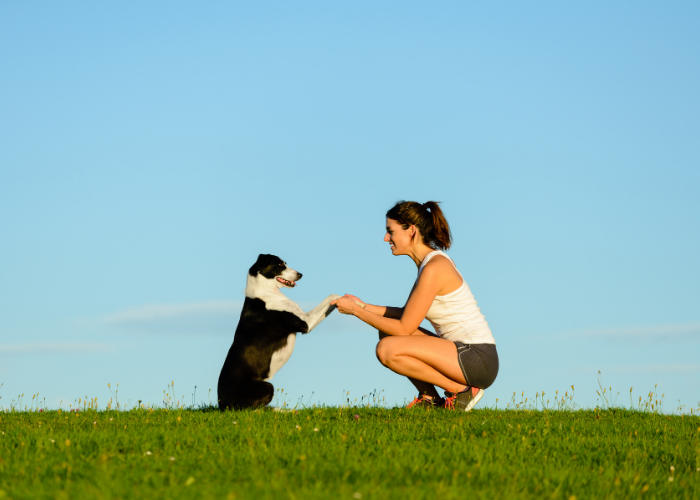
If you are a dog wiz and have a good amount of experience training dogs, then the cost of training may be non-existent. For owners with intermediate experience or knowledge around dog training, free online resources can be enough supplementary information to get by without additional costs.
However, for new dog owners, training classes can be exceptionally important for setting your dog up for success by providing them with monitored socializing, healthy habits, and good manners.
Most dog training classes will cost you between $50 - $200 per session. Assuming you do one session per week, that comes out to roughly $200 – 800 per month. Some trainers or companies may offer package deals that will run between $100 - $400 depending on the type and intensity of the training.
If your dog needs any kind of corrective or behavioral training, such as stopping dog-to-dog aggression, these kinds of specialty training may be more expensive.
Training for events such as dog shows or special service-dog training will ultimately take the top spot for most expensive, however, and should be reserved for owners who truly plan on bringing their dog into a competitive or service-oriented role.
Dog Walking
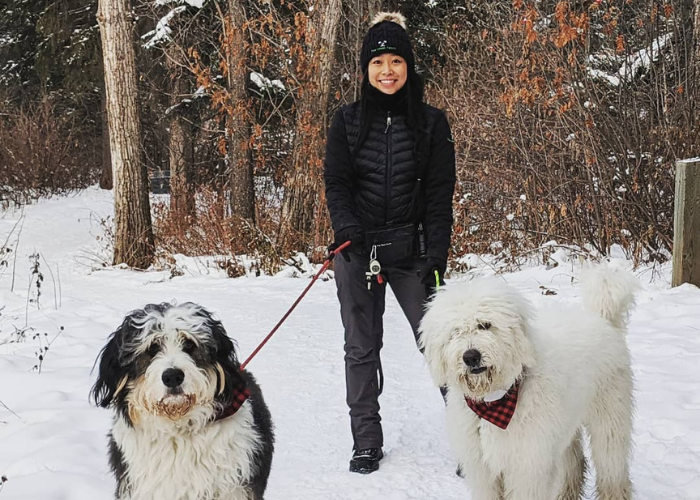
Ideally, dog walking should be performed by the owner as it gives them a chance to bond with and train their pup. However, for individuals with hefty work schedules or inconvenient shift hours, dog walking services may come in handy.
These days, dog walkers can be found in all price ranges.
Walks typically can range somewhere between $10 - $25 per walk. In some cases, a dog walker can be hired for long-term employment in which case rates may be altered to fit a longer working relationship.
If you have more than one dog, most dog walkers will offer special discounted rates for walking more than one dog at a time.
If you are regularly utilizing a dog walker throughout the work week, be sure to budget accordingly.
Annual costs for a dog walker can range between $100 - $500. In cases where an owner takes on a full-time dog walker, the price is likely to enter into the thousands.
Dog Boarding
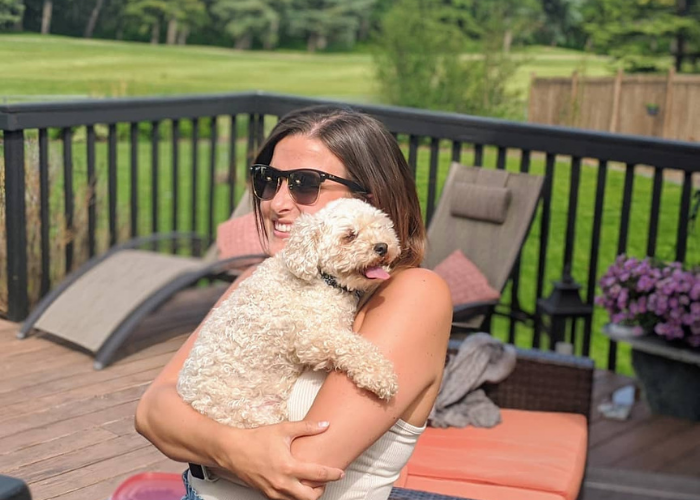
For dog owners who travel frequently – especially those who have to travel regularly for work – pet boarding is likely to be a recurring monthly cost. Like with every other dog cost, pet boarding can range pretty significantly in price.
According to Home Guide:
“Average dog boarding rates are $25 per day, $40 per night, $150 per week, or $500 per month depending on where you live, the size of your dog, and how long of a stay your pet needs.”
When looking for a place to board your dog, consulting with a veterinarian or professional dog trainer may be the best way to find the most reputable services near you.
Final Thoughts: Costs per Year of Owning a Dog
As we have covered, the cost of owning a dog per year is highly subject to change depending on how the owner budgets and what they consider to be priority necessities.
Things such as training classes, walking, and boarding may not be necessary in every situation, but it is still smart to account for them when creating a pet budget.
Here is a summary of the potential costs for each of the factors we have discussed:
|
Annual Costs
|
Low Range
|
High Range
|
Average
|
|
Neuter/Spay*
|
$50
|
$250
|
$150
|
|
Food and Treats
|
$1,000
|
$1500
|
$1250
|
|
Beds*
|
$50
|
$300
|
$175
|
|
Leashes and Collars*
|
$25
|
$100
|
$62.50
|
|
Grooming
|
$20
|
$500
|
$260
|
|
Veterinary Care
|
$80
|
$150
|
$115
|
|
Flea and Tick
|
$15
|
$20
|
$17.50
|
|
Heartworm
|
$10
|
$15
|
$12.50
|
|
Vaccinations
|
$75
|
$100
|
$ 87.50
|
|
Training Classes*
|
$0
|
$600
|
$300
|
|
Walking*
|
$0
|
$500
|
$250
|
|
Pet Boarding
|
$25
|
$500
|
$262
|
|
Total
|
$1,350
|
$4,535
|
$2,942
|
* = may be a one-time cost or will not recur monthly
Ultimately, the costs of owning a dog will range somewhere between $1,000 and $4,000 in most cases.
Additionally, many of these costs such as beds and collars may not need replacing for several years and are thus one-time costs that occur at the time of adoption.
When adopting a new dog into your family, be sure you have all your bases covered and get established with a veterinarian as soon as possible.
Dogs can be highly valued family members, and providing them with top-tier care should always be a priority.